Biloxi, Mississippi (April 2010)
The Biloxi Lighthouse (map) is a symbol of the city, of hope and resilience in the wake of major hurricanes that have scoured the Gulf Coast for centuries. This is perhaps the most easily approachable lighthouse of any I’ve visited. Anyone can take Interstate 110 directly to the heart of Bilox and exit west onto Beach Boulevard. A quarter mile down the road and there the Biloxi Lighthouse rises, right in the median of this very busy beachfront street.
I’ve been to many lighthouse, some requiring drives to obscure locations, hikes to remote areas, or even boats to isolated islands. This is the only one that I’ve seen that sits smack in the middle of a beachfront highway. There’s even a large parking lot right next to it. The only difficulty getting here is waiting for the light to turn green, watching for the walk sign to light, and stepping a few feet along the crosswalk. Nothing could be simpler.
Construction
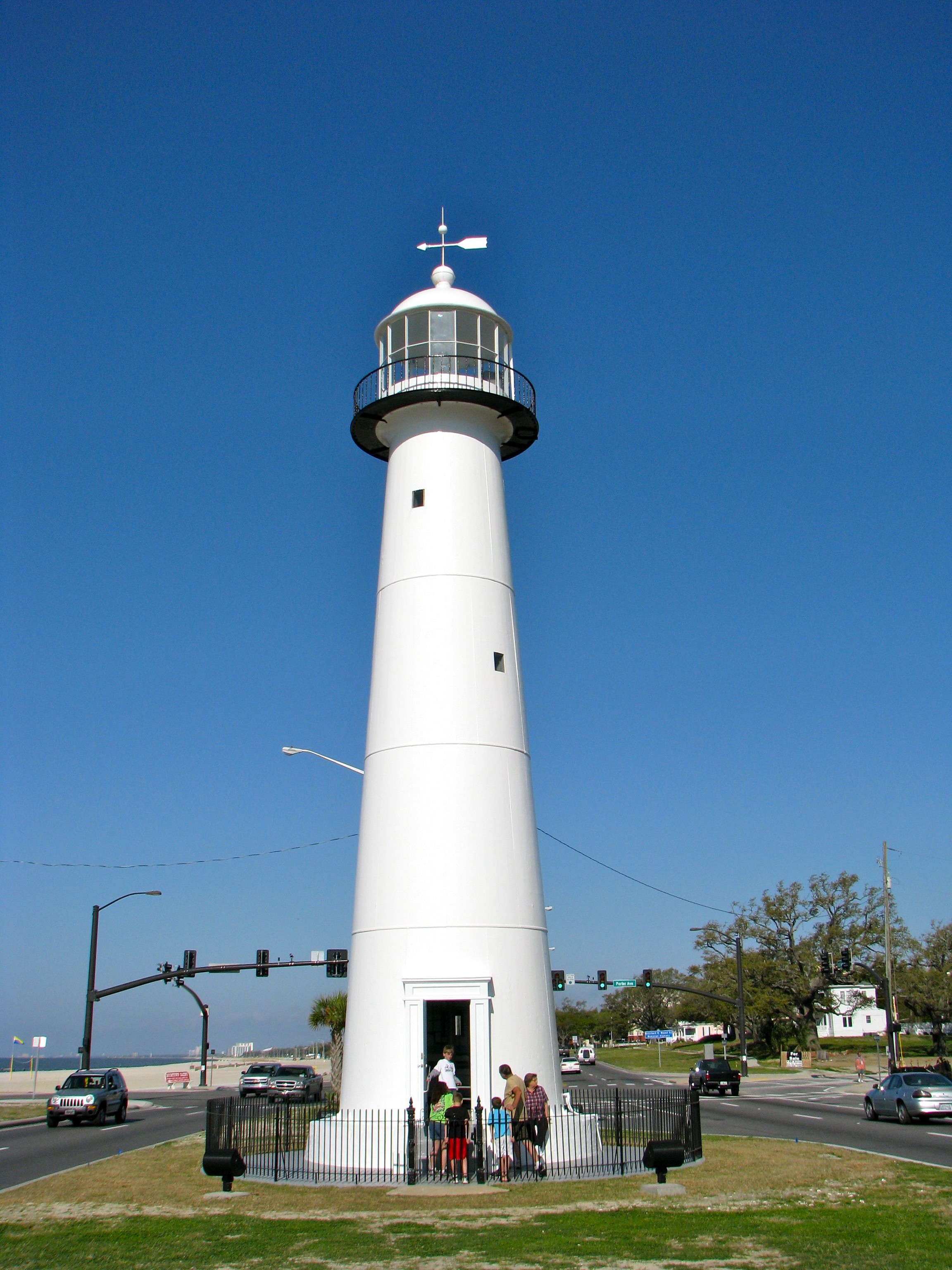
The lighthouse strikes an impressive figure along the Biloxi shoreline. It’s an old light with a fascinating history, going back all the way to 1848. The government contracted with Murray & Hazlehurst the previous year for construction of a light.
Murray & Hazlehurst was a high-tech ironworks based in Baltimore, the premier purveyors of advanced locomotive steam engines. That might seem an odd choice but this light didn’t fit the usual mold. They used cast iron, the first of its kind in the southern United States. They lined the interior with locally-fired bricks and the entire structure went up in only six weeks.
The white conical tower rises 61 feet above the highway, sending a signal to ships plying the Mississippi sound, a part of the Gulf of Mexico. This served as a primary approach to the busy Port of New Orleans at the time of construction. It became a vital link to freight and passenger transportation entering and exiting the vast Mississippi River trade routes.
Commemoration
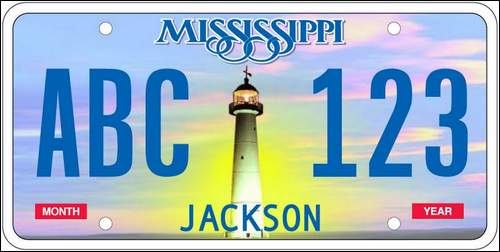
Mississippi changes the design on its automotive license plate every five years. Lawmakers selected the Biloxi Lighthouse as the statewide design for 2007-2011. That might seem unusual to some observers. There are many places in the state that are located nowhere the Gulf of Mexico. A resident at the northern end of Mississippi would have to drive for more than six hours and cover nearly four hundred miles before seeing this shoreline.
The selection, however, testified more to resilience and inspiring stories of character and determination as people rebuilt the coast after Hurricane Katrina. The Biloxi Light served as perhaps the most visible symbol of that strength in the face of adversity.
Hurricanes
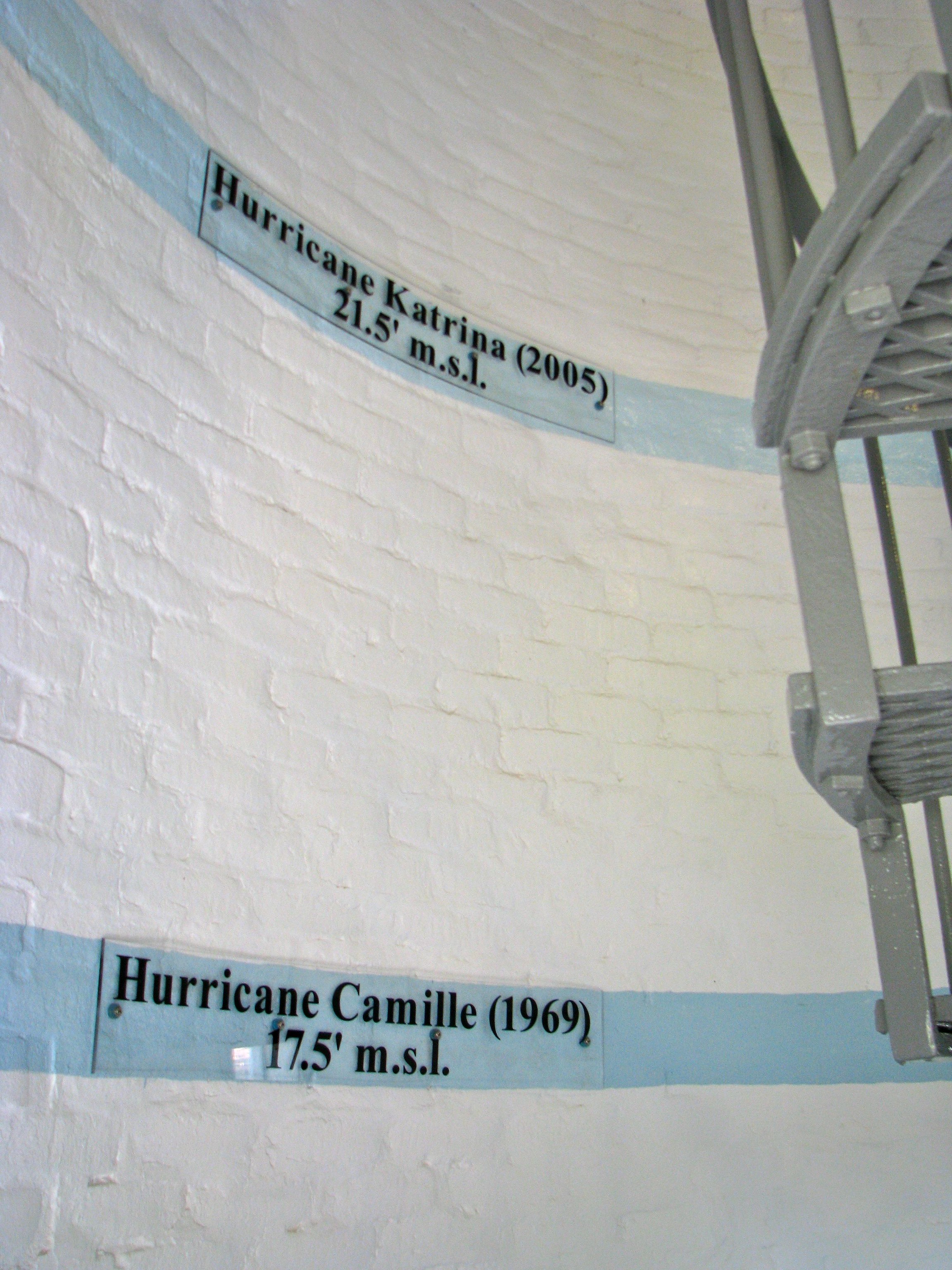
An American flag unfolded from the balustrade of the Biloxi Lighthouse in the days immediately following Hurricane Katrina in 2005. Civic leaders vowed that the flag would remain until the light could be repaired. You will notice that none of my photographs contain a flag. That’s because they completed the restoration a few weeks before my April 2010 visit.
The cast iron exterior remained in place after the storm but much of the interior masonry crumbled in the face of a massive surge of water that rolled into the coastline. Windows shattered, wrought iron fencing twisted, the entrance got mangled, but the lighthouse survived. It stood unrepaired until 2009 when $400,000 could be secured to returned it to its original glory. The restoration lasted several months.
A visual reminder of Katrina as well as other past hurricanes such as Camille and unnamed storms from 1852, 1855, 1860, 1893, 1906, 1909 and 1947, exists inside inside the tower. Lines have been drawn in blue paint circling around the interior. They mark the water level that rose up from the sea during each of those epic storms. These flood markers show that Katrina surged 21.5 feet above mean sea level — far more than any other — on the way to causing misery and destruction along the coast.
Stories
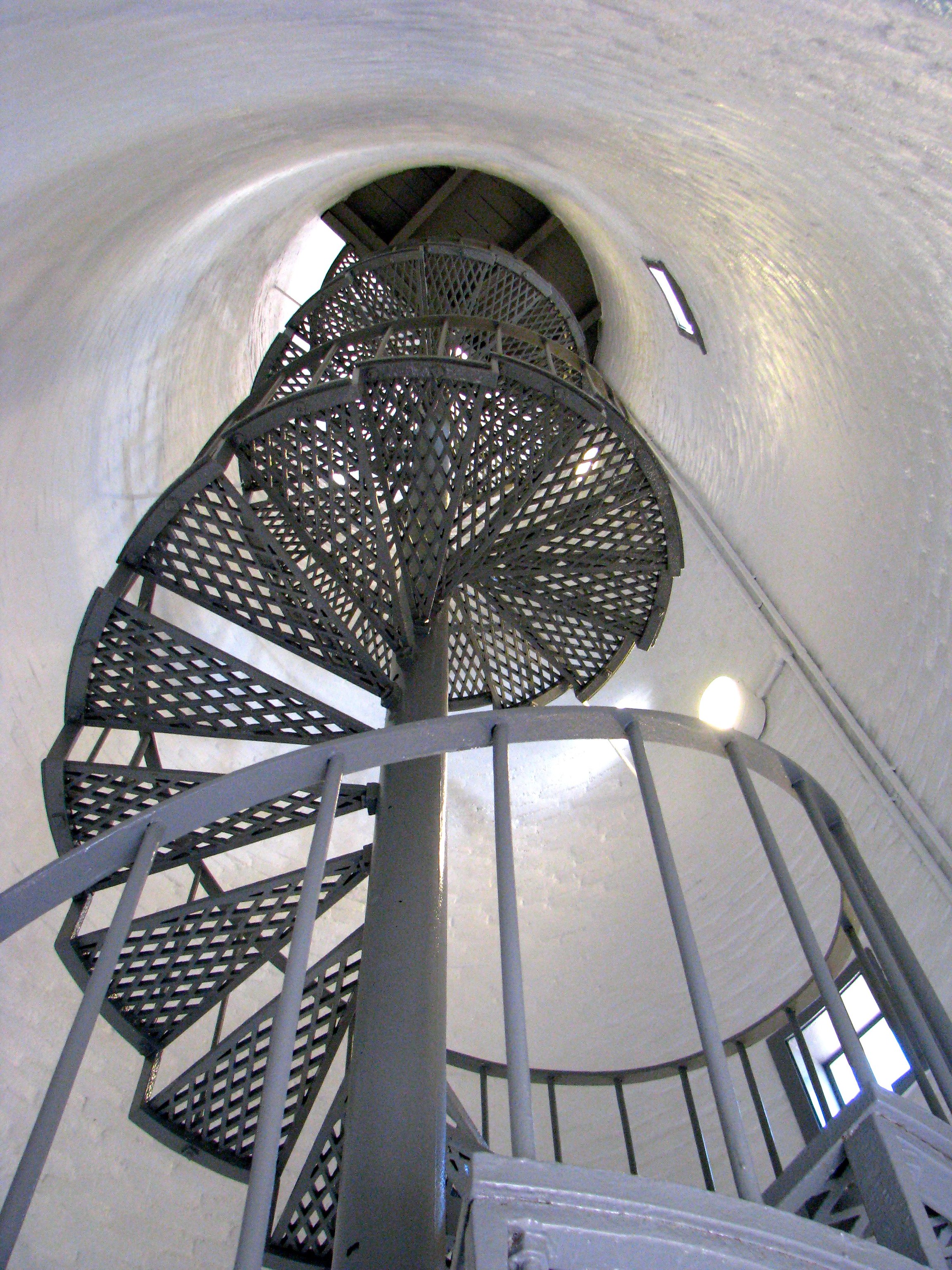
I climbed the spiral staircase, 57 steps, up to the lantern room. It’s not the tallest light I’ve ever climbed and the tightly twisted stairs quickly corkscrewed us towards the top. The volunteer on duty regaled us with fascinating historic anecdotes and statistics about the Biloxi Lighthouse. He told one story about a time when the keepers painted the tower black in the nineteenth century.
A legend holds that it was painted that way to mourn the assassination of Abraham Lincoln. Never let a good story get in the way of the facts, I suppose. In actuality it was painted black several YEARS after that event and the reason was much more pedestrian: it was a means to waterproof and protect the cast iron structure from corrosion. This created a major problem, however. The tower faded into a background when viewed from the sea. Mariners could no longer use it as a daytime aid to navigation. The familiar landmark had disappearing from sight in a background of trees. Painters quickly applied a fresh coat of white paint to reverse the mistake.
Fresnel Lens
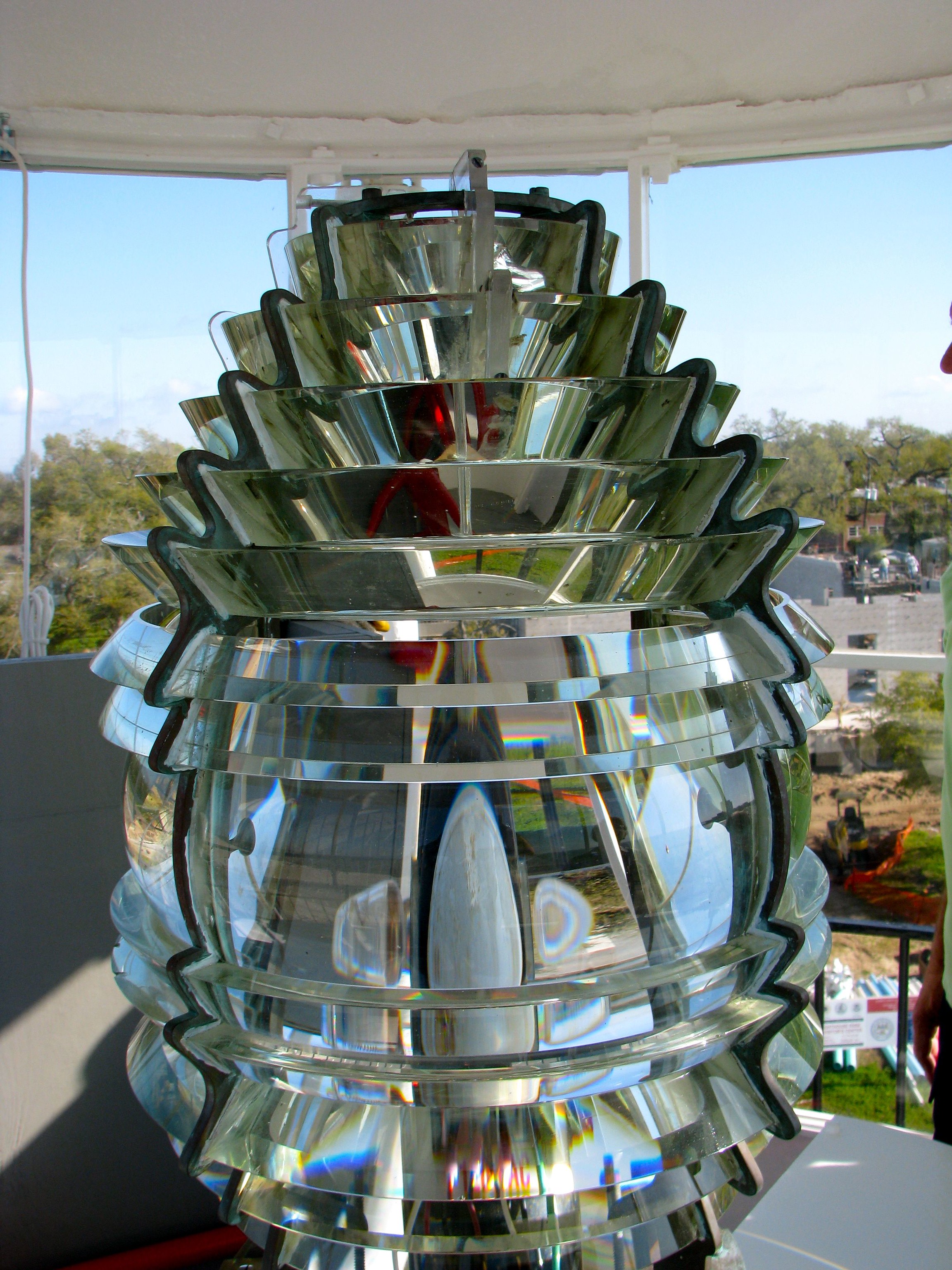
The spiral staircase winds up to a short ladder and a 19-by-23-inch trapdoor leads to the lantern room high atop the tower. This is the most difficult part of the climb. Only a handful of people can fit up there at a given time. However, it’s a rewarding climb, peering out along a 48 foot focal plane. There is a great example of a Fifth Order fresnel lens lit by a modern electric bulb. The glass itself dates back to 1926. It replaced an earlier Fourth Order lens installed with the original structure.
The light still shines and it still guides ships. It also acts as a landmark for aviators, lining up directly with the runway at nearby Keesler Air Force Base. It’s what is known as a “Private Aid to Navigation.”
Men usually filled lighthouse keeper jobs, often with their families in tow. That was flipped on its head here at the Biloxi Lighthouse, which was maintained by women for most of its history. One of them, Maria Younghans, tended the light for an astounding 53 years in a row.
Visiting

What a view! A Biloxi skyline of gargantuan hotel casinos sprouts among miles of sandy shores set along Beach Boulevard.
Its easy to see the Biloxi Lighthouse from the outside but not necessarily its interior. The City of Biloxi, which took over ownership after the Coast Guard declared it surplus property in 1968, only offers tours in the early morning. At the time of our visit these tours took place at 9:00, 9:15 and 9:30 a.m. Monday through Saturday, and capacity is limited by the structure’s size. Fortunately it was sparsely attended on a Tuesday morning in early April. You might wonder about the strange hours. The answer is simple: imagine how it might feel inside of a confined, cast iron structure with little ventilation later in the day in the hot Mississippi sun.
Readers who have an interest in lighthouses might also want to check my Lighthouse Index page.

Leave a Reply